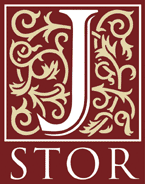Document Type
Article
Abstract
We estimated the frequencies of GSTM1 and GSTT1 “null” homozygotes in 10 different ethnic populations of India by a genotyping method based on polymerase chain reaction. These populations, inhabiting diverse geographical locations and occupying various positions in the sociocultural hierarchy, were represented by a sample of 299 unrelated individuals. Frequencies of GSTM1 and GSTT1 “null” homozygotes varied from 20% to 79% and 3% to 39%, respectively, across the study populations. Maximum frequencies of GSTM1 and GSTT1 “null” homozygotes (79% and 39%, respectively) have been observed in the same population (Jamatia). Frequencies of homozygous “null” genotypes at the GSTM1 and GSTT1 loci show a significant positive correlation in these populations, which is contrary to expectations. Apossible implication is that the two enzymes are working in tandem, instead of working in a complementary way.
Recommended Citation
Roy, Bidyut; Majumder, Partha P.; Dey, Badel; Chakraborty, Madan; Banjeree, Sanat; Roy, Monami; Mukherjee, Namita; and Sil, Samir K.
(2001)
"Ethnic Differences in Distributions of GSTM1 and GSTT1
Homozygous “Null” Genotypes in India,"
Human Biology:
Vol. 73:
Iss.
3, Article 8.
Available at:
https://digitalcommons.wayne.edu/humbiol/vol73/iss3/8

